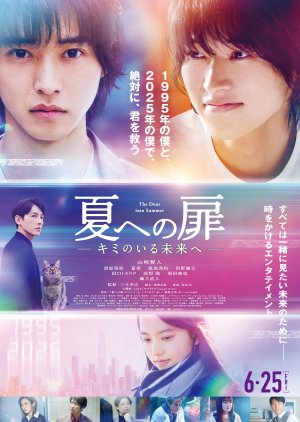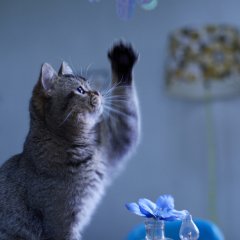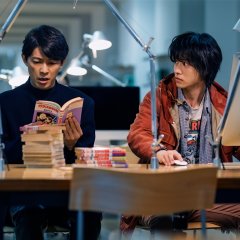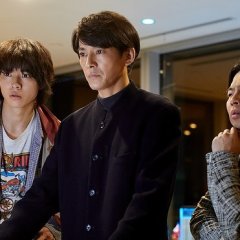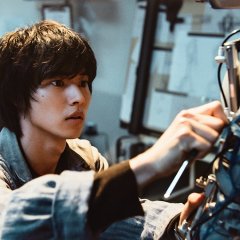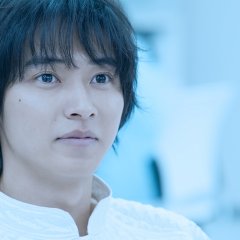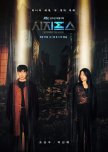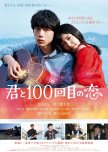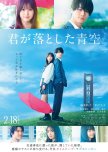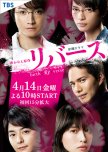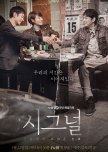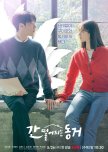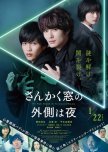 Japanese Noodle Cart October 2020
Japanese Noodle Cart October 2020 - Português (Portugal)
- English
- magyar / magyar nyelv
- dansk
- Título original: 夏への扉 ―キミのいる未来へ―
- Também conhecido como: Natsuhenotobira , The Door into Summer
- Diretor: Miki Takahiro
- Roteirista: Kanno Tomoe
- Gêneros: Drama, Ficção científica
Onde assistir A Porta Para o Verão
Subscription (sub)
Elenco e Créditos
- Yamazaki KentoTakakura SoichiroPapel Principal
- Kiyohara KayaMatsushita RikoPapel Secundário
- Fujiki Naohito[Humanoid robot]Papel Secundário
- NatsunaShiraishi RinPapel Secundário
- Mashima HidekazuMatsushita KazutoPapel Secundário
- Harada TaizoSato TaroPapel Secundário
Resenhas

Watch for the cat and the humanoid
7 Tips to Find that Door into Summer:1. Pete the cat is adorable. I want that cat. Scratch that. I NEED that cat.
2. Pete the humanoid is equally adorable. He is more human than the human in this movie.
3. Acting kudos goes to Pete the cat AND the customer service humanoid. They are believable in their characters.
4. Expect some mind-blowing sci-fi movie? Lower it down.
5. Pete the cat is adorable. I just need to say it again.
6. Watch if you need a respite in between or after a heavy gut-wrenching drama/movie.
7. Treat this movie as if you're going to watch a super fluffy romcom/comedy.
Esta resenha foi útil para você?

A ‘ Door’ Into The Realm of Disappointment…
Based upon the eponymous novel by Robert A. Heinlein, ‘ The Door Into Summer’ ( alternatively known as ‘ Natsu e no Tobira: Kimi no Iru Mirai e’ or ‘ 夏への扉 キミのいる未来へ’) seemed to initially offer viewers an intriguing premise under the directing reigns of Takahiro Miki and the writing of Kanno Tomoe.
However despite the movie’s impressive plot premise and the casting choice of renowned actor Kento Yamazaki ( ‘ Orange’, ‘ Alice In Borderland’, ‘ Death Note’), ‘ The Door Into Summer’ soon suffered greatly under the aimless direction of plot holes, lacklustre genre exploration, character and plot growth as well as pacing also.
The movie initially focuses upon young scientist Takakura Soichiro ( Kento Yamazaki). Trying to complete the research of his late paternal and mentor figure Matsushita Kazuto ( Hidekazu Mashima) upon plasma research in 1995, Soichiro’s plans are scuppered when he’s betrayed from the shadows and loses control over his research . With no other options, Soichiro is subdued into a cryogenic chamber. Waking up nearly thirty years later in 2025, Soichiro discovers that the world has changed significantly as he desperately tries to find a way back to 1995…
Perhaps one of ‘ The Door Into Summer’’s greatest downfalls and arguable strengths came through its emotive moments. Admittedly it isn’t out of a question for the science-fiction genre to explore and widen the scope of expectations with presenting the emotional conflicts and struggles of humanity. In particular one of the most heartfelt moments of ‘ The Door Into Summer’ came through Soichiro’s relationship initially in 1995 with his adopted feline friend Pete and being able to relate to his cat’s emotional struggles. In the latter-part of the series this relationship was replaced by Soichiro’s android friend PETE ( Fujiki Naohito); one of the few characters who could offer viewers surprising comic relief and emotional complexity at times also .
Nevertheless ‘ The Door Into Summer’ was a storyline that was supposedly focused upon elements of time travel and pseudo-science. However whilst the lingering presence of humanoid robots and time travel are intriguing plot hooks for viewers, Kanno Tomoe’s screenplay greatly struggled under the cataclysmic weight of plot inconsistencies and lacklustre loopholes as well as logic .
One of the major problems of Tomoe’s world-building and “factual “ science came through its lacking and quintessential presence in the main events of the storyline. Perhaps the major source of the problem can be found that ‘ The Door Into Summer’ was heavily dominated by its emotional aspects. However rather than using this as an opportunity to explore characters or even widely offer an edge of complexity towards Soichiro, Kanno Tomoe ladened the narrative in parts upon Soichiro’s insipid, potential romantic relationship with main female lead Matsushita Riko ( Kiyohara Kara).
This was a notable flaw throughout Miki’s movie; there was rarely a sense of plot. Seemingly quintessential characters and events were rarely developed and whilst the movie did attempt to present a gradual “ villain” , ‘ The Door Into Summer’ could often feel aimless and directionless within its messaging and plot development. In particular the ending of the movie notably presented the outcome of the plot’s aimless narrative with an anticlimactic and lacklustre conclusion.
In addition to this there’s also the issue of the lacking opportunities to really flesh-out characters and in particular the main male lead of the series. For a a main character who is supposedly constantly looking towards advancement , Soichiro’s uninspiring and tailored reaction towards the near-future, technology and the world around him felt somewhat regimented rather than befitting for his seeming character archetype.
The acting of the series was admittedly a slight mixed-bag. Kento Yamazaki’s role as Soichiro was admittedly somewhat uninspiring with certain line deliverances feeling enforced. The supporting cast such as Matsuhhita Riko played by Kiyohara Kara and Natsuko as Shiraishi Rin in particular were decent enough with their performances but rarely brought forwards a dynamic charm due to limited screenwriting opportunities. Perhaps one of the few standout performances of ‘ The Door Into Summer’ was Fujiki Naohito as PETE but due to limited dialogue and depth opportunities, Naohito was rarely a wider scope to exploring his onscreen persona with tact.
Perhaps one of the few saving graces of ‘ The Door Into Summer’ under the directing reigns of Takahiro Miki came through the movie’s impressive and glossy CGI, cinematography, slick shots and fuzzy retro and nostalgia shoots also. Although admittedly a somewhat generic approach with certain filming techniques, Miki did help to captivate a certain aesthetic throughout the filming of the series. The OST of the series was slightly dull in comparison to the slick shots of the movies; synchronic in parts, but rarely giving viewers an opportunity to feel the emotional weight and impact of scenes either.
Overall ‘ The Door Into Summer’ is a film which whilst boasting some impressive filming shots, scenery, CGI and some familiar faces, often felt heavily burdened by its writing. The elements of science-fiction present within the narrative of the film are approached tactlessly with aimless plot motivations rarely giving further insight into the growth of characters or tension either. The ending of the series will likely offer viewers with a final admittance of the narrative’s disappointing deliverance despite its unlimited potential.
Esta resenha foi útil para você?

